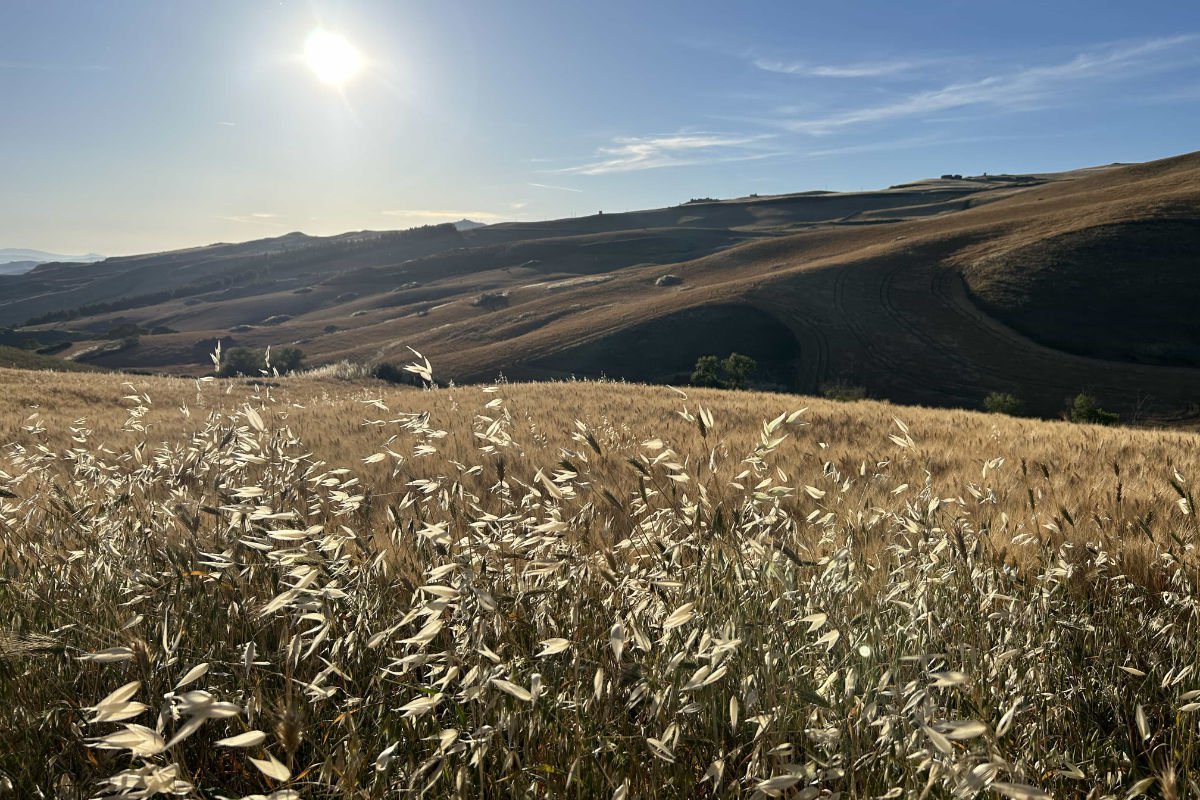Sublime (and Delicious) Self-Sufficiency in Sicily
 A happy aperitivo at Susafa in Sicily. Photo by Pavia Rosati.
A happy aperitivo at Susafa in Sicily. Photo by Pavia Rosati.
When a Sicilian tells you, “I can manage,” believe them. These are hearty people. They’d have to be, given the waves of invaders that made their way to the geographically strategic island throughout the centuries — Phoenicians, Swabians, Normans, and Arabs, to name but a few.
This spirit thrives at Susafa, a boutique eco resort in the Madonie mountains in northern Sicily, an hour from the northerncoast. The drive from Palermo is notable for its what it lacks — visual clutter. I saw nary a billboard, logo, supermarket, or any sign of commercialism. Just fields, trees, and the occasional small town. Other than the fact that I was in an air-conditioned Mercedes with a few Italian journalists and saw windmills lining the hillsides, my journey wouldn’t have looked all that different in the 1700s.

Back then, what is now Susafa was a small, self-sufficient village that produced its own oil, wheat, wine, legumes, fruits, and vegetables. Tall walls surrounding the compound would have protected the villagers from any unwanted intrusions.
Fast forward a few centuries to today. The countryside remains pastoral and serene — a sea of golden fields of wheat and grain; gentle hills and valleys stretching to the horizon. The old farmhouse, granary, and storehouses have been converted — as sustainably as possible, with solar panels and careful water and energy conservation — into a restaurant, lounge, 17 spacious guest rooms and suites, and a cooking school. The gardens are irrigated with rainwater; pesticides and chemical fertilizers never touch tr fields. The menus rely on local produce ("kilometer zero" is the trendy Italian term for this), and the wine list is heavy on award-winning varietals from the beautiful Tasca d'Almerita estate just down the road.
Inside these walls, the rest of the world and all its unwanted intrusions continue to feel very far away.








The transformation of the hamlet is the work of agricultural entrepreneur Manfredi Rizzuto, who set out twenty years ago to reinvigorate the estate his family has called home since 1868. Not so long ago, his younger sister Sara traded a budding career as a lawyer to join the family enterprise. Both are hands-on, welcoming, engaging hosts. They are also disarmingly attractive in that way that seems second nature in Italy and foreign everywhere else — toasting our arrival with a welcome drink of fresh almond milk infused with a cherry jam. Bruno, Manfredi’s Weimaraner, who is clearly very clever but also always ready for a nuzzle, remained close at all times. By all accounts this family business is going very well: The resort is a member of Small Luxury Hotels as well as its Considerate Collection of sustainable hotels, and it recently earned a Michelin Key.
In local dialect, “Susafa” is short for su sa fare, which roughly translates to “he can do it,” and that spirit of self-sufficient industry remains strong. Those chemical-free golden fields surrounding the estate as far as the eye can see are actually 1,250 productive acres from which Susafa harvests the ingredients that go into their pastas, flours, olive oil, tomato sauce, cherry jam, and aromatic herbs. Everything is for sale on property and on the website, and I promise you’ve never tasted cherries like these Platonic ideals of stone fruit.



Only I hadn’t come to Susafa to farm. I was here to feast.
But first we had to cook. (Self-sufficiency, remember?) Off we went to the cooking school for a workshop with chef Rita Sireci, whose teaching menu included a trio of beloved Sicilian specialties — caponata (made with apples because eggplant weren’t in season, and seasons must be respected), arancini (fried rice balls), and pannelle (chickpea fritters). Other cooking workshops are dedicated to breads, pastas, and cannoli.
This was no mere demo. Rita put us to work. As she shared sweet stories of food and family, we made vegetable broth to cook the rice. We washed, chopped, and sauteed spinach and beetroot to stuff into arancini along with mozzarella before rolling the rice balls in a coat of breadcrumbs. (This was when we paused for a few glasses of Tasca wine and fresh focaccia from the ovens nearby.) We whisked chickpea flour and water together and whipped the mix over a flame into a polenta-like consistency before ladling it into a loaf pan to chill, then we sliced and fried it up. Arancini went into that same pot of boiling oil to bathe until toasty brown.







Lunch — our creations supplemented by a few plates of pasta and meats from the grill — was served at the outdoor dining room near the pool. It turns out we’re pretty good cooks.
So good we were rewarded with a sunset aperitivo in the fields at sunset.
We toasted the end the day not within the walls at Susafa but on a terrace almost too picturesque to be true — a platform amid the wheat, a seriously striking alfresco lounge. (They more than make do with what they have around here.) A chef prepared an assortment of fried treats to pair with the breads and appetizers that had been arranged on the low table. (In the Gospel According to Sicily, everything tastes better fried.) For his part, Bruno ob
ediently sat by the chef, at once supervising his work and waiting to be tossed a bite. Manfredi busied himself popping the first of many bottles of fizz.



As the sun waned and the skies turned successive shades of orange, we casually draped ourselves among the sofas and armchairs overlooking the surrounding hills, glasses of wine in hand, toasting our outrageous good fortune, pretending that living in a Loro Piana ad was the kind of thing we do on any given Tuesday.
Because at Susafa, that’s just the kind of magic they create every day.
